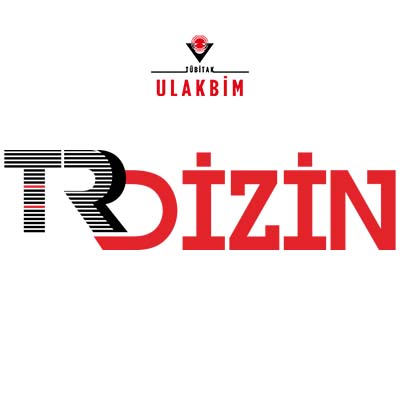Awareness Levels of Public Relations Officers in the Incident Management Team in Disaster and Emergency in Hospitals
DOI:
https://doi.org/10.63556/ankad.v9i2.267Keywords:
Public relations and disaster, disaster and health institutions, , hospital disaster and emergency planAbstract
Abstract
Healthcare institutions not only provide healthcare services in disasters or emergencies, but also inform their internal and external stakeholders about the balance sheet of the disaster. In emergency situations in health institutions, this task is fulfilled by the public relations officer defined in the Hospital Disaster and Emergency Plan. The problem of the study is that the public relations activities included in hospital disaster plans are not actively implemented in the recent earthquake disasters in our country. Within the framework of this problem, the study aimed to measure the level of knowledge of public relations officers defined in the plan in public, private and university hospitals providing tertiary health care services that take an active role in disasters and emergencies and to evaluate the public relations activities carried out in hospitals during earthquakes in 2020 and 2023. In order to measure the level of knowledge of public relations officers, a semi-structured interview form was prepared and applied to the public relations officers of three hospitals and the answers given were analyzed comparatively. The study is important in terms of addressing a specific area by evaluating the public relations processes in the hospital disaster plan. In the study, it was found that the public relations officers of the three hospitals did not have sufficient basic knowledge about the plan, their knowledge about emergency codes, which will help to manage the incident in a short time in emergencies, was quite limited, and they did not carry out public relations activities in accordance with the hospital disaster and emergency plan in emergencies and disasters. Based on the findings, it was concluded that the public relations officers assigned in the disaster plan in hospitals do not have a good command of the duties, authorities and responsibilities defined in the plan, their level of knowledge about the disaster plan is limited, public relations officers do not carry out activities in line with the disaster plan in disasters, and public relations officers of university and public hospitals have a higher level of knowledge about the disaster plan.
In the study, it was found that the public relations officers of three hospitals did not have sufficient basic knowledge about the plan, their knowledge about emergency codes, which would help to manage the incident in a short time in emergencies, was quite limited, and they did not carry out public relations activities in accordance with the hospital disaster and emergency plan in emergencies and disasters. Based on the findings, it was concluded that the public relations officers assigned in the disaster plan in hospitals do not have a good command of the duties, authorities and responsibilities defined in the plan, their level of knowledge about the disaster plan is limited, public relations officers do not carry out activities in line with the disaster plan in disasters, and public relations officers of university and public hospitals have a higher level of knowledge about the disaster plan.
References
Abd elazeem, H., Adam, S., Mohamed, G. (2011). “Awareness of Hospital Internal Disaster Management Plan Among Health Team Members in A University Hospital.” Life Science Journal, 8(2): 42-52
Afet ve Acil Durum Yönetim Başkanlığı, (2024). https://www.afad.gov.tr/tanimi-tarihcesi-ve-gorevleri#:~:text=25%2F05%2F2009%20tarihinde%205902,il%C3%A7e%20sivil%20savunma%20m%C3%BCd%C3%BCrl%C3%BCkleri%20kald%C4%B1r%C4%B1lm%C4%B1%C5%9Ft%C4%B1r. (E.T.: 09.12.2024).
Alexander, D. E. (2014). Social media in disaster risk reduction and crisis management. Science and engineering ethics, 20, 717-733.
Avcı, S., Kaplan, B., Ortabağ, T., & Arslan, S. (2022). Üniversite hastanesinde çalışan hemşirelerin afet konusundaki bilgi ve bilinç düzeyleri. Afet ve Risk Dergisi, 5(1), 94-108.
Cebeci, S. P., & Arberk, O. K. (2024). Sağlık Çalışanlarının Hastane Afet Ve Acil Durum Planı Bilgi Düzeyi. The Journal of Academic Social Science, 120(120), 103-112.
Coombs, W. T. (2010). Parameters for Crisis Communication. The Handbook of Crisis Communication. Ed. W. Timothy Coombs, Sherry J. Holladay. Malden, MA: Blackwell Publishing.
Creswell, J. W. (2016). Qualitative research methods: Qualitative research and research design according to five approaches. Trans. M. Bütün, SB Demir). Ankara: Siyasal Kitapevi (Original publication date, 2013).
Delbridge, T. R., Bailey, B., Chew, J. L., Conn, A. K., Krakeel, J. J., Manz, D., … & Wilson, E. M. (1998). EMS agenda for the future: where we are… where we want to be. Prehospital Emergency Care, 2(1), 1-12.
Della Porta, D., & Keating, M. (Eds.). (2008). Approaches and methodologies in the social sciences: A pluralist perspective. Cambridge University Press.
Flick, U. (2015). Introducing research methodology: A beginner's guide to doing a research project. Sage.
Glik, D. C. (2007). Risk communication for public health emergencies. Annual review of public health, 28(1), 33-54.
Guth, D. W., & Marsh, C. (2007). Public relations: A values-driven approach. Pearson.
Hastane Afet Planı (2021). https://dosyasb.saglik.gov.tr/Eklenti/40879/0/haphazirlamaklavuzusurum214062021pdf.pdf, Erşim Tarihi: 02.01.2025.
Hjorth, L., & Kim, K. H. Y. (2011). The mourning after: A case study of social media in the 3.11 earthquake disaster in Japan. Television & New Media, 12(6), 552-559.
Johansen, W., and Frandsen, F. (2007). Crisis communication: When the corporate image and reputation is threatened [English Trans.]. Frederiksberg, Denmark: Samfundslitteratur.
Panos, E., Dafni, P., Kostas, G. & Zacharoula, M. (2009). Crisis Management in The Health Sector; Qualities And Characteristics of Health Crisis Managers. Inter- national Journal of Caring Sciences, 2(3), 105-107.
Park, J., Cha, M., Kim, H., & Jeong, J. (2012). Managing bad news in social media: A case study on domino’s pizza crisis. In Proceedings of the International AAAI Conference on Web and Social Media (Vol. 6, No. 1, pp. 282-289).
Sağlık Bakanlığı, (2021). https://www.saglik.gov.tr/TR,1789/hastane-afet-ve-acil-durum-plani-hap-hazirlama-kilavuzu.html (E.T.: 09.12.2024).
Sağlık Hizmet Sunucularının Basamaklandırılmasına Dair Yönetmelik (2022) https://www.mevzuat.gov.tr/File/GeneratePdf?mevzuatNo=39362&mevzuatTur=KurumVeKurulusYonetmeligi&mevzuatTertip=5. (E. T. : 02.01.2025)
Sarık, M. E., & Cengiz, S. (2022). Hastane afet ve acil durum planı eğitim, hazırlık düzeyi ve çalışanların bilgi seviyelerinin tespit edilmesi: Antalya ili örneği. Gümüşhane Üniversitesi Sağlık Bilimleri Dergisi, 11(1), 122-132.
Şen, G., & Ersoy, G. (2017). Hastane afet ekibinin afete hazırlık konusundaki bilgi düzeylerinin değerlendirilmesi. Gümüşhane Üniversitesi Sağlık Bilimleri Dergisi, 6(4), 122-130.
Van den Hurk, A. M. (2013). Social media crisis communications: Preparing for, preventing, and surviving a Public Relations# FAIL. Pearson Education.
Yurdakul, A., Piroğlu, F., & Okay, N. (2013). Kocaeli Derince Eğitim ve AraĢtırma Hastanesi Mevcut Afet Planı Çerçevesinde, ÇalıĢanların Afete Hazırlığının Değerlendirilmesi. Mehmet Akif Ersoy University Journal of Health Sciences Institute, 1(2), 75-85.
Downloads
Published
How to Cite
Issue
Section
License
Copyright (c) 2025 Journal of Anatolian Cultural Research (JANCR)

This work is licensed under a Creative Commons Attribution-NonCommercial 4.0 International License.










